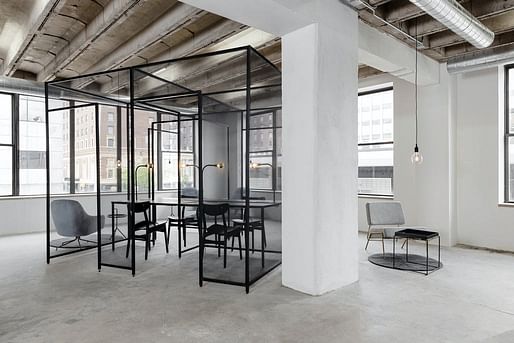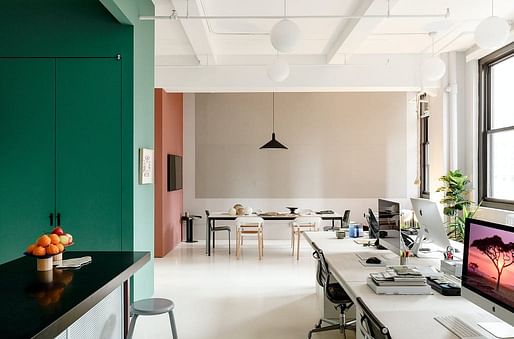

In a new thought piece, NBBJ architect Ryan Mullenix presents the findings of NBBJ and the University of Washington’s research into how hybrid workspaces impact creativity. Coincidentally launched at the beginning of the COVID-19 pandemic, the research sought to establish the key behavioral and spatial elements which can enable creative workers, including architects, to maintain a creative flair away from their traditional workplace.
The research’s findings may prove useful for creatives long after the pandemic, with evidence including Archinect’s own survey finding that hybrid work options have become a permanent fixture in architectural employment. For example, there are currently 41 open positions on Archinect’s job board offering purely remote working.

According to architect Mullenix, a key finding from research participants was that “control” remains an important part of workplace settings, whether in the office or at home. “The importance of choice in the workplace — how space is physically used and the behaviors around those uses — remains fundamental to employee satisfaction and performance,” Mullenix says.
While it may be commonly assumed that working from home would offer more control to the worker, the research suggested this wasn’t always true. While participants noted more control over their direct physical environment, such as temperature, lighting, and noise, they had less control over peripheral factors such as housemates and furniture options. The study found that those with a greater ability to design and adapt their space were the best performers at home, while those with low agency were the worst.
The team recommends that hybrid workspaces be designed with easily accessible temperature and lighting controls, similar to those found in offices as well as wheeled, modular furniture which can offer workers the control to reconfigure their hybrid workplace.
Contrary to other studies which found that remote working boosts productivity, the team observed that most participants in their study struggled to match their job performance before the pandemic, noting that “generally, interviewees felt less effective in productivity, team problem solving, time management, and open-ended work (e.g. writing an essay).”
To combat this, interviewees (50% of whom shared their hybrid workspace with other people) told the team that a separate, distraction-free space would allow them to engage in more creative thinking. The team concluded that the most effective hybrid workspace is a dedicated office room with work-specific furniture, with the least effective space being shared rooms such as kitchens. However, the team also noted that few participants even had access to such dedicated spaces in their living environments, with no choice but to occupy shared spaces in the home.

To aid the creation of a dedicated workspace, the team put forward a number of design solutions. These include creating “expansive” workspaces to reduce stress, noting “an element such as the height above you can have an impact on how a space supports ideation or focus.” This can be achieved by “increasing perceived dimensions” through mirrors, natural lighting, and high ceilings as well as designing “comfort through contrast” by placing small spaces next to a large open area. The team also notes the importance of building a separate space to rest, suggesting that “taking a break in a direct workspace rather than outside of it is not as restful or beneficial to creativity.”
The team’s final advice to boost creativity is to encourage movement, citing studies that movement enhances creativity by improving cognition, learning, memory, and decision-making. Design features for new and existing workspaces suggested by the team include standing desks, quiet flooring to allow easy movement without distracting others, separate but inviting eating and relaxing areas to encourage movement and transition between spaces, and easy, convenient circulation throughout the space.
No Comments
Block this user
Are you sure you want to block this user and hide all related comments throughout the site?
Archinect
This is your first comment on Archinect. Your comment will be visible once approved.